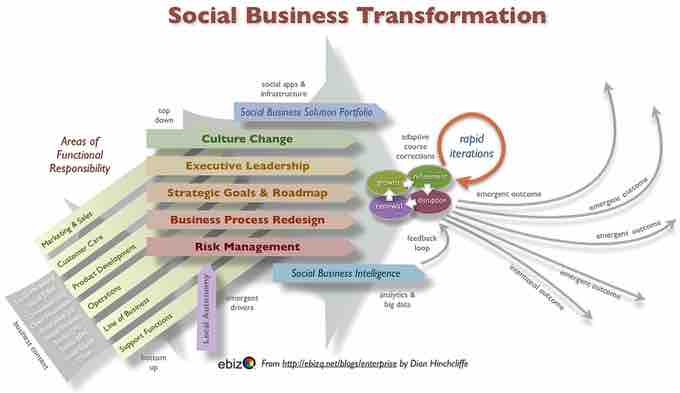Organization design can be defined narrowly as the strategic process of shaping organizational structure and roles to create or optimize capabilities for competition in a given market. The life cycle of an organization, industry, and/or product can be an important factor in organization design.

The life cycle of a business
Organizations must always be striving to sustain their position in a given competitive environment. This often requires structural evolution and rapid iterations in the feedback loop of disruption, growth, refinement, and renewal.
Overview of the Life Cycle
From an organizational perspective, "life cycle" can refer to various factors such as the age of the organization itself, the maturation of a particular product or process, or the maturation of the broader industry. In organizational ecology, the idea of age dependence is used to examine how an organization's risk of mortality relates to the age of that organization. Generally speaking, organizations go through the following stages:
- Birth
- Growth
- Maturity
- Decline
- Death
The Enterprise Life Cycle
The Enterprise Life Cycle is a model that underlines the way in which organizations remain relevant. The Enterprise Life Cycle is the dynamic, iterative process of changing an enterprise over time by incorporating new business processes, technologies, and capabilities, as well as maintaining, using, and disposing of existing elements of the enterprise.
Richard L. Daft's Four Stages
Richard L. Daft theorized four stages of the organizational life cycle, each with critical transitions:
- Entrepreneurial stage → Crisis: Need for leadership
- Collectivity stage → Crisis: Need for delegation
- Formalization stage → Crisis: Too much red tape
- Elaboration stage → Crisis: Need for revitalization
Structural Implications of the Life Cycle
The life cycle of an organization is important to consider when making decisions about the organization's structure and design. Richard L. Daft's model underlines critical problems within each stage of an organization's life cycle that can often be solved through intelligent structural design.
Daft first notes that the entrepreneurial (or startup) stage of an organization requires leadership. In this situation, decision-making must be enabled and bureaucracy should be minimized. This lends itself well to pre-bureaucratic stuctures in which everyone involved is empowered to take the reins and employ their creativity and innovation.
In the collectivity stage, momentum has been created and expansion is required. This is where functional or divisional strategies may begin to emerge, enabling managers to build teams and delegate tasks.
Companies continue to expand in the formalization stage, requiring increased bureaucracy and more levels of authority to approve a given decision. In this stage they grow large enough to accommodate functional, divisional, or even matrix structures in order to produce at scale. Organizations in this stage must be careful not to fall too strongly into rigid structures that inhibit or disrupt efficiency, communication, or decision-making.
The Enterprise Life Cycle comes strongly into play in the elaboration stage. During this stage the organization must retain its relevance in the industry through reinforcing competitive advantages and/or creating new products to fill changing consumer needs. This requires a great deal of organized creativity and exploration of new markets, which may justify team or divisional structures within the broader organizational structure. Such structures allow small teams to experiment and react quickly as they try new entrepreneurial strategies while the larger organization maintains operative efficiency in established markets.